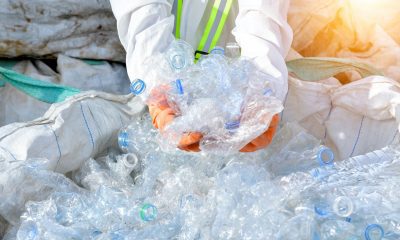By Tom Campbell via SWNS
The Arctic coastline could shrink by three meters a year if global emissions are not cut, warns a new study.
Rising temperatures are speeding up erosion around the north pole, putting people and the planet at risk, scientists say.
While scientists have been aware of the damaging effects of climate change on coastal erosion for some time, its magnitude and speed have remained unclear.
Now researchers have run through different scenarios and found erosion rates over the next century could trigger a domino effect that will threaten the entire planet.
Lead author Dr. David Nielsen, of the University of Hamburg, Germany, said: “We have run through a range of scenarios, depending on how much greenhouse gases humanity will emit in the coming years."
via GIPHY
Based on these scenarios, if greenhouse gases are not checked, erosion rates could more than double by 2100, meaning three meters of land would be lost every year.
The researchers were able to calculate the future balance for the Arctic as a whole for the first time by combining previous models and studies.
Dr. Nielsen said: “In the Arctic, erosion is always a combination of thermal and mechanical factors."
High levels of erosion could also threaten local populations and important infrastructure.
Dr. Nielsen continued: "Depending on the location and shape of the respective coast, we expect to see varying wave heights.
"With increasing temperature, the range of the waves also increases, because the sea ice disappears.
"In addition, the ice-free period in the summer is lengthened, making coasts even more vulnerable.”
Rising levels of erosion could also jeopardize the Arctic's carbon sinks, which have been building up with plant and animal material over thousands of years.
Permafrost - ground that remains completely frozen, is one of the most important carbon stores in the world, holding around 1,600 billion tonnes, more than twice the amount in the atmosphere.
The Arctic ocean also traps large quantities of carbon under the water, absorbing on average 58 megatons every year.
But erosion could upset the Arctic's storage balance by releasing carbon from the ground into the sea, thereby creating a vicious cycle between rising levels of carbon, temperatures and rates of erosion.
Dr. Nielsen said: “According to the study, not only is more and more land mass being lost in absolute terms; with each degree of temperature increase, the annual rate of erosion increases - in meters, but also in millions of tons of carbon released."
The findings provide important information for policymakers and coastal protection efforts in the affected areas.
While reducing global emissions would help slow erosion rates, there is no way of avoiding it all together.
Dr. Nielsen said: “Our findings also show that a shift toward greater sustainability and significantly lower greenhouse gas emissions could slow the acceleration in the second half of the century.
"However, it won’t be possible to stop the loss of landmass entirely.”
The findings were published in the journal Nature Climate Change.


 Parenting7 days ago
Parenting7 days ago
 Lifestyle6 days ago
Lifestyle6 days ago
 Good News2 days ago
Good News2 days ago
 Broadcast1 week ago
Broadcast1 week ago
 Health3 days ago
Health3 days ago
 Broadcast1 week ago
Broadcast1 week ago
 Money1 week ago
Money1 week ago
 Wildlife2 days ago
Wildlife2 days ago





















